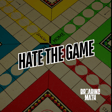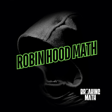Become a Creator today!Start creating today - Share your story with the world!
Start for free
00:00:00
00:00:01

81: Correct. Now Try Again (Multiple Approaches to the Same Problem)
Join Sofía Baca and her guests, the host and co-host of the Nerd Forensics podcast, Millicent Oriana and Jacob Urban, as they explore what it means to be able to solve one problem in multiple ways.
This episode is distributed under a Creative Commons Attribution-ShareAlike 4.0 International License. For full text, visit: https://creativecommons.org/licenses/by-sa/4.0/
[Featuring: Sofía Baca; Millicent Oriana, Jacob Urban[
Help Support The Podcast by clicking on the links below:
- Try out ZenCastr w/ 30% Discount
Use my special link to save 30% off your first month of any Zencastr paid plan - Patreon
- YouTube
- Breaking Math WebsiteEmail us for copies of the transcript!
Transcript
Multiple Solutions in Math and Life
00:00:00
Speaker
Every math problem, no matter how basic, has more than one solution. This is perhaps no surprise. You may have watched someone solve a math problem in a different way than you would have. You might have been taught different ways to solve a math problem, perhaps even in the same course. It's easy to intuit that this might be the case.
00:00:16
Speaker
The idea of technological progress, after all, depends on the ability to do the same task in different ways. There are even idioms, such as there's more than one way to share a sheep, that reveal a deep intuition that the property of being able to arrive at a solution to a problem in different ways is a universal feature of problems in general.
Varied Approaches to Math Problems
00:00:33
Speaker
Mathematicians often consider different solutions to the same problem, because different things can be revealed by each approach to the same problem. This ranges from simple arithmetic problems, like addition and multiplication, to complex proofs.
00:00:44
Speaker
So what are some examples of different ways to solve the same problem? What types of things do we learn by redoing problems in new ways? And what are some problems that have multiple famous solutions? All of this and more on this episode of Breaking Math, Episode 81. Correct. Now try again.
00:01:06
Speaker
I'm Sofia and you're listening to Breaking Math.
Theme Introduction: Problem-Solving Methods
00:01:09
Speaker
With me I have on the hosts of Nerd Forensics, Millie Oriana, HowdyDuty, and the co-host Jacob Urban. Hello! So today we're going to talk about different ways to solve the same problem. As always we'll kind of start what experience do you have with this kind of thing.
00:01:23
Speaker
I mean, I remember having to do it in classroom math problems and stuff like that. But a really great example, we actually did a whole episode in Nerd Forensics about a video game called Hitman. And that's a great example of something that has multiple solutions of the same problem. Because essentially, you're supposed to neutralize somebody, and you can make it look like a gas explosion. You can push them down something.
00:01:51
Speaker
make them get electrocuted. You can also just go in there and just shoot at everything.
00:01:58
Speaker
Yeah, exactly. And that happens in a lot of open world video games, a lot of video games where there's a lot of interacting components that interact in their own individual ways, which is a lot like mathematics.
Analogies: Hitman and Woodworking
00:02:10
Speaker
You can't add x to y and get a new variable z unless you're defining z to be x and y. x plus y is not x times y. There are certain rules to math, too. And so it makes sense that
00:02:25
Speaker
Like I said in the intro, there's all these different expressions. Many ways to skin a cat. Jacob, you're a woodworker. Can you talk about two different ways to solve a problem in woodworking?
00:02:36
Speaker
Yeah. Um, so the first thing that comes to mind is, you know, the classic making a box, which there you could, you go with a classic box joint to secure your two sides together, or you could do dovetail joints to put them together. Like it's just. However you want to do it, how you feel is going to look the best. And can you use more than one tool, a different tool to make a dovetail joint?
00:03:02
Speaker
you can um there are a couple ways to do it there's within woodworking a lot of tools are very specialized to do a certain task uh but you know you you could for like the dovetail in particular uh doing like a sideways dovetail joint because a traditional dovetail just looks like that it looks like a dove's tail and you
00:03:25
Speaker
use the wide end to secure the two pieces together. But if you're doing it sideways, so instead of having it joining at 180 degrees, you now have it joining at 90 degrees. So that joining board has to be cut at a very specific angle because of the way the dovetail is shaped.
00:03:48
Speaker
to secure it. And I was just going to bring up, that's how you can tell a professional from an amateur. I'm an amateur woodworker who's done some woodwork in the past. Jaygov is a pro because he didn't even suggest a butt joint. It never even crossed his mind. And I was thinking the whole time, well, you could just also do a plain Jane butt joint.
00:04:07
Speaker
But see, as we can say, not only could the box be done with all these different types of joints, all the different types of joints can be done with different tools. Different tools. They can be done, like you said, for different parts of the box. And like Millie was saying, she has less experience with woodworking than you. But because you all know all these, I'm sure you agree that if you taught a class in woodworking where you just taught somebody to make 1,000 different types of boxes, you could get some pretty far, right?
00:04:37
Speaker
Oh, yeah. Yeah. Because here's the thing. You I've made up my own joints, too, that don't like I've just been playing with wood and figured out how to link things together. And it was just weird joints that I've made. Oh, yeah. And it's all geometry. Essentially, yes. And Milly, the the system that you're talking about, it's a lot of cause and effect, right? Which is an axiomatic system. We're really close to one, which we'll discuss it near the end of this episode. Are we ready to begin? Yeah.
Alternative Math Techniques for Multiplication
00:05:06
Speaker
All right, so let's say that I asked you to multiply a number by five, right? And you want to do it like you do it in school. How would you go about that? I have some paper right here. All right, so I've written down a problem for you, Jacob. What is it? 371 times five. All right, so if you did like you did in school, how much ago about it? I would go about it. Or like if you did it like you learn in school. Yeah. Okay. Well,
00:05:34
Speaker
So you're multiplying the one by the five and you've written the five beneath it. Uh, you've multiplying five by seven and you've written the five down there and I'm guessing you're carrying the three. Yes. So I'm trying to figure out what is five times seven and that's 35. Yeah. So that is 350 since it's 70. So that would be three 55 and then that is 1500. So you get one
00:06:04
Speaker
eight. That's how I would do it. Yeah. And that's a, and that's a method that you've seen before, right? Really? Yes. And yeah, you've basically multiplied your component one by one. Yeah. I break it. Like it just works easier for me to break it down and then add it together.
00:06:20
Speaker
No, it's cool is that we're in a base 10 system. So there's actually a trick for dividing by 5. Yes. I mean multiplying by 5. And that's dividing by 2 and multiplying by 10. And the way that you do that is this. All right, so 371 times 5. So one way that you do this is that you kind of divide by 2 and kind of shift over the decimal. So the way that we do this is, what is 3 divided by 2? 1.5.
00:06:46
Speaker
1.5. So you write down a 1, release the 3, and then we just keep 5 in our heads, okay? Alright. Now it's 7 divided by 2. 7 divided by 2 is 3.5. 3.5, so there's going to be another 5 that we're going to carry. So with the old 5 that we're carrying, we add that to the 3, because 7 divided by 2 is 3 and change, and we just write 8. 8, alright. And it makes sense, right? Because we just carry the 5. Because 5, yeah, 5 plus 3, 8.
00:07:15
Speaker
Oh, yeah, exactly. And then 1 divided by 2 is? 1 divided by 2 is 0.5. 0.5, 0.5, right? And we're carrying a 5 already? Yes. And then we take the 5 that we're already carrying and we just pop it at the end. All right. So yeah, I mean, you can see the advantages to this with larger numbers, right? Yes. Yeah. I absolutely can.
00:07:36
Speaker
And you could do the same thing with dividing by five. All you gotta do is multiply by two and divide by 10. So 371 divided by five. What's 371 times two? 371 times two is 742.
00:07:53
Speaker
742 and then we just move the decimal place over 74.2 mm-hmm interesting yeah yeah and that's and that's also the thing if we want to multiply by 10 all we got to do is move the decimal point to the right and then we want to divide by 10 move it to the left yeah all right so do either you know 25 by 25 off the top of your head
00:08:14
Speaker
25 times 25. If you don't know it off the top of your head, let's pause on that. Yeah, I don't know off the top of my head. That's 150.
Calculating Square Roots: Methods and History
00:08:25
Speaker
No way higher than that. I did five times 25.
00:08:30
Speaker
Well actually you'll get, that's the thing. That's halfway there. We use the property that 25 is five times five, right? Yes. So we could actually multiply it by five, four times. We start, I mean, to start with five and multiply it by five, three times, right? Yes. And just for kicks, do y'all want to do that with the halving system they've shown? Yeah, I can, I can try. Okay. So what we're going to do is I'm going to divide it by five first, right?
00:08:56
Speaker
Well, not divided by five, multiplied by five. Multiply by five. So we start with the five, right? Mm-hmm. And what's half of five? 2.5. 2.5, so we just write 25. Because we carried the five at the end. Yeah. I mean, we don't put the decimal there. Yeah. All right, so now what's half of 25? Half of 25 is going to be? 12.5. 12.5, yes. So 125. And what's half of 125?
00:09:26
Speaker
Half of 125 is going to be 63 point, or 62.5. 62.5. There we go, 625 is 25 times 25. I mean, do you wanna give it a, just for kicks, do you wanna do 125 times 125? All you have to do is multiply by five two more times. Yeah, sure. You do the next two lines. Okay. So we're at 625. And 125 times 125 is what we're going for now.
00:09:56
Speaker
Oh yes, all we need to do is, since this is already- Multiply it by five two more times? Yeah, because 25 times 25 is 125 times 125 divided by five twice, right? So we'll play it backward. So half of 625 is going to be 312.5. Half of 3125 is going to be 1,500
00:10:28
Speaker
63. Oh, let's see. Well, we're carrying a five and two divided by two is one. So yeah, 60, uh, 62.5. Yeah. With 15,625. Yeah. Yeah. So 15,625. So that's it.
00:10:47
Speaker
You see how easy that was? You get an intuition for how to do this stuff. This is a really nice example. I don't want to go too far into this type of math because we have a lot of stuff to cover on this episode. But if we're interested, we've mentioned on the show before, Trachtenberg speed math is what this is related to.
00:11:09
Speaker
It was a system that was created by a concentration camp victim who developed it to keep
Euclid's and Modern Techniques for Volume Calculation
00:11:18
Speaker
sane in the camps. Oh wow, that's fascinating. Yeah right. Now Jacob, in your day job you work with money right? Yes.
00:11:26
Speaker
So what I'm gonna say is, American money, just for people who don't quite know, we have a 25 cent piece, a 10 cent piece, a five cent piece, a rarely used 50 cent piece, and an even more rarely used dollar piece. But Jacob, given the property that 25 cents is equal to a quarter, what is 31 times 25? How much would 31 quarters be worth? Yes. 7.75? Yep.
00:11:55
Speaker
So yeah, it'd be $7.75, right? Yes. And I feel like it's sometimes useful to use that because our minds are like, it's easier to think sometimes in terms of money, you know, because our brains just work with it every day.
00:12:08
Speaker
Yes. Um, here's the thing though. If somebody gives me 31 quarters, I'm usually very upset. Oh yeah, definitely. All right. And finally we're going to do 25 times 25. Again, we're going to use this property eight plus B squared is equal to a squared plus two times eight times B plus B squared, right? So 25, if we do that as 20 plus five, what's 20 squared?
00:12:36
Speaker
20 squared is... Just 2 squared times 10 squared, right? Yeah, 2 squared times 10 squared, yeah. Yeah, it was 2 squared? 4. 10 squared? 10 squared, 100. Yeah, so it's 400. 400. And how about 20 times 5? 20 times 5 is 100. Times 2? 200. And then finally 5 times 5? 5 times 5 is 25.
00:13:02
Speaker
So you add the 400 to the 200, you get 600 to the 25, and you get 625. All right, so now we're going to do another problem. We're going to do a multiplication of the three digit number by a two digit number, right?
00:13:16
Speaker
Yeah. So we're going to do 527 times 39. You know, we've done the write it out method, right? How would you do that? You just do row by row, do digit at a time, right? Yeah. Yes. Well, what I'm going to teach y'all how to do today is the old French way that reduced by French peasants. All right. And this is how it's done. Uh, so you, what you do is you write 527 and you write a one next to it. What's two times 527? 10 55. No, 10 54.
00:13:46
Speaker
I'm gonna write a two there, and then double that, so you get 2108, and you double that too. And then 4216, you write an eight. Do, do, do.
00:14:03
Speaker
Let's see, what's the next one? 84, 32, 16, and then 16,864. Is that right? Yes. All right, yeah. 16,864 next to 32.
00:14:23
Speaker
All right, and now we stop because if we double 32, it will go way over 39, right? So here's the thing. We start with 39, and the first number that is smaller than 39 is 32, right? The biggest number that is. So
Historical Math Techniques: Binary Multiplication
00:14:41
Speaker
Jacob, write down 16,864.
00:14:45
Speaker
Put an X next to that. And then what we do is that we subtract 32 from 39 and we get 7. Now what's the biggest number smaller than 7 there? 4. Yep. And so now write down 2,108 underneath that number you just wrote Jacob. So yeah, did you write 2,108 underneath 16,864 Jacob? Yes.
00:15:10
Speaker
Alright, so 7 minus 4 is 3. Smallest number, okay Millie, biggest number there is on the right hand column smaller than 3. On the right hand column smaller than 3 is 2. Yep, so write down 1,054 beneath that Jacob. Yep. And then finally 3 minus 2 is...
00:15:34
Speaker
And so finally we just write down the last one too, which is 527. Yes. All right. Um, and, uh, let's see, do you want to add that all up? So I got 20,553. Yep. That's the right answer. Okay.
00:15:49
Speaker
Now Millie, did you notice anything peculiar about this method? Something perhaps modern about it, even though it dates back to the Middle Ages. The fact that it's algebra, right? It's not even algebra, it's a type of arithmetic. But if you notice the list of numbers on the side, one, two, four, eight, 16, it's a method of binary multiplication. Discovered by French peasants. Fascinating.
00:16:18
Speaker
Oh, yeah, that's really fascinating. I mean, I guess when you have nothing else to do all day, but toil. Well, I mean, you need to toil and calculate how much you owe your lower. No, obviously. Well, yeah. Well, also, you know, the aristocracy is not letting you learn real math, so you have to come up with something to make sure you're not getting screwed on your grape harvest. Honestly, this this is this is about as good as the real math of the day.
00:16:44
Speaker
Well, yeah, yeah. But like, you know, they're not allowing the peasants to go to their colleges and stuff. Oh, yeah. Farmer, you need to know you're getting paid appropriately. Oh, yeah. And yeah, there's there's so many reasons why you need to know you're paying the right amount in taxes. If French is actually interesting, just side note about French is that the count in a sort of base 10 and 20 at the same time, like the 60 is three 20s, for example, 70 is three 20s in a 10. Interesting.
00:17:13
Speaker
There's a hospital that has a really old-fashioned name called 1520s. I don't know if it's still open, but it had 300 beds. That's what it's called, 1520s. Interesting. That is a very interesting system. All right, so now we're going to do the square root of something. And we're going to assume that we have a calculator, but the calculator can't do square root, right? Yes. So let's do the square root of 3 by trial and error, OK? OK.
00:17:43
Speaker
Ready, Millie? All right. You take the first guess for the square root of three. Square root of three is going to be, isn't it one? One times one is one. Yeah. So it's what times what is three? 1.5. So let's just say 1.5 is the first guess, right? Yeah. That's hard. So yeah, it's 2.25. So the square root is going to be what? Higher or lower than 1.5? Higher. Higher. So Jacob, give me another guess. 1.75.
00:18:12
Speaker
All right, 3.0625. So we're over by a teeny bit. Millie, give me the next guess. 1.67.
00:18:24
Speaker
Two point seven eight one point seven three. OK, so it's going to keep it's going to be about that with some extra hanging off the edge. Yeah. Let's see if we go for another digit, Millie. All right. Look, we're at two point nine nine two nine. All right. So one point seven three four seven three two seven three three.
00:18:51
Speaker
So it's obviously between two and three, right? Yes. So to one still not right. So it has to be had the next digit to be zero, right? Yes. Zero. What zero one zero one, maybe.
00:19:09
Speaker
And so on, right? Yeah, you just keep going until you get closer. Yeah, and that's one way you can do it. And what's interesting is we'll get another... The amount of digits per guess is constant the further we go down, right? Yeah. But now we're actually
Ancient Babylonian Math Methods
00:19:25
Speaker
gonna... This is the way that calculators and actually the ancient Babylonians did it. So what you start off with is your guess, right? 1.5, right? Really?
00:19:36
Speaker
So what we do is you take the average of 1.5 and 3, which is the number we're trying to take the square root of, divided by 1.5.
00:19:47
Speaker
The next guess is, what does that say? 175. 175. 1.73214. And see, it got the digits way quicker. Yeah. But yeah, that's because it's obviously an algorithmic way of doing that. But yeah, that's the way that calculators do it. Interesting.
00:20:12
Speaker
I don't think I could do that in my head or even with my like hands and like a tablet. Well, yeah, I mean the key is you have to take the average of the number, the average of your guess and the number you're trying to take the square root of divided by your guess to get the next guess.
00:20:32
Speaker
Did you say it was Babylonian, sir? OK. Yeah, no, because I'm just imagining some poor Babylonian dude pressing his little stick into a clay tablet trying to figure out math problems. I mean, if you've seen a modern reconstructive archaeologist, though, it's a very quick way of writing to. Oh, yeah. It's just as quick as ours, actually. Yeah, yeah. Pretty much any way of writing is about as OK. That's not true.
00:21:01
Speaker
They're not all about as quick, but they're within a few magnitudes of one another because there's like shorthand and things like that. The problem is that, you know, he has to go through this by hand. The one point seven three two one four two eight five seven plus.
00:21:17
Speaker
Well, here's a cool thing, though, in ancient Babylonian math, this many digits of you don't need as many digits of accuracy because you use base 60 digits. Yeah. So and that's the thing about the Babylonians is they had a lot of tables they looked up. So there's this tablet. Hold on. Let me look it up. Yeah. Somebody figured it out before them and they would use that as a reference guide.
00:21:39
Speaker
Yeah. So for example, Plimpton three, two, two was thought to be a, an accounting record for a long time. Uh, it's this document right here. Yeah. That's Plimpton three, two, two. Yeah. And it turns out that's actually a, um, a set of Pythagorean triangles. Really? Yeah. And the dimensions to them and the general formula for calculating them. Yeah. It's fascinating.
00:22:06
Speaker
All right, so now we're gonna do volume of a pyramid. All right, so this is Euclid's proof of the volume of a pyramid. In earlier parts of Euclid's Elements, Euclid book 12 talks about how pyramids of equal bases have equal volume and things like that.
00:22:26
Speaker
But this is the proof that shows the actual ratio of the volume of a pyramid to the, well, you'll see here. So as you can see, it's a triangle that's been extruded. And the way that Euclid's done here is he's cut it into three exactly equal pieces. And can you see why they're equal?
00:22:43
Speaker
Yes. They take up the same amount of space. Yeah, exactly. And if you look at these, because also if you look at the distances that they all cover, they all have the same, like there's one going across the diagonal here and here and here, you know what I mean? Yeah, yeah. So they're all, yeah, it's just three shapes of the exact same dimension put together. So right there, you could 12 book eight.
00:23:07
Speaker
you could book 12 part 8, is that similar pyramids at which triangular bases are in the triplicate ratio of the corresponding sides. So that's an ancient Greek way to say one-third of base area times height. Interesting. Another way that we could do this is with calculus, which was developed much, much later.
00:23:28
Speaker
If something is, if a square is half as big in every dimension, it's going to be what times the area of the original square? Two. Well, a quarter, right? Yeah, quarter.
00:23:38
Speaker
Yeah, because four of them will fit into the original area. So that is to say we squared the area as we go down. So if we do the integral from x equals 0 to, let's see, 2h of area times h divided by x squared. Let's see if that works.
00:24:04
Speaker
I see right there, area times height over three. You get the same exact formula of two different methods. Interesting, yeah. That's really cool. Yeah, and that was for everyone who couldn't understand my mumbling. The integral from x equals zero to h of a times x over h squared dx. And the reason why is, like we said, the ratio squared of the individual length components is the ratio of the area components.
00:24:34
Speaker
And there's actually a similar thing that we could do for the volume of a sphere. So actually let's talk about Archimedes' calculation.
Archimedes' Geometric Calculations
00:24:44
Speaker
What this is right here is a sphere, right? And it has a cone going halfway through it so that the cone intersects the sphere halfway through. And the tip of the cone is at the top of the sphere, so the cone penetrates the sphere. And then around that, you have actually a cylinder. And what you do is that you show that the volume of the
00:25:12
Speaker
the sphere is equal to the cone, I mean, is equal to the cylinder minus the cone. And the way that you do that is by, all right, so yeah, the way that you do it is that, so if we have gone, let's say like X down here, right, and has radius R, the amount that it goes out here is just X, so the area of the cut of the cone in that case is just X squared.
00:25:41
Speaker
The sphere, however, you can use the property that distance from here to here is a radius. And so that means that radius is the square root of radius squared minus x squared squared, so just radius squared minus x squared. And that's how far that goes out.
00:26:03
Speaker
And the very last is this outward piece, which is just radius squared. And radius squared indeed is radius squared minus x squared, right? I mean, radius squared minus x squared is radius squared minus x squared, right? Yeah. It's almost tautological. Yeah. And that's how you calculate the volume of the sphere. Interesting. And just to prove that we can do it another way, we can also do it this way. We take here the integral.
00:26:28
Speaker
from theta equals 0 to 2 pi. And we're going to do the full calculus problem. But basically, you can set it up in either the spherical coordinate system or the cylindrical coordinate system or the Cartesian coordinate system. And you take basically a triple integral, and you arrive at the same volume of the sphere, which in each case is 4 thirds pi r cubed.
00:26:56
Speaker
All right, so now we're going to do 2 plus 2. How do we do 2 plus 2? You can just add them together. You can get 4, right? Or you can multiply 2 by 2. Well, that's a different problem, right? Technically. Technically.
00:27:11
Speaker
Yeah, I mean, okay, I guess you could factor it out like, yeah, two times one plus one equals two times two. Yeah, I guess you could change into that. But what you could also do is you can use piano arithmetic. So piano arithmetic is, we talked about it, I think, on a previous, actually a few previous episodes, but it has a few rules, is that there's a thing called a natural number.
00:27:34
Speaker
The thing after a natural number, the successor is what it's called, is also a natural number. The sum of two natural numbers is equal to the sum of some number n plus the successor of m is equal to the successor of n plus m.
00:27:55
Speaker
And those are the only rules you need to know. Oh, and we also need to define that the successor of 1 is 2. The successor of 2 is 3. Successor of 3 is 4. And I know we've done this on another episode, but it's one of my favorite examples of a problem made unnecessarily complicated. So we start with 2 plus 2, right? Yes.
00:28:17
Speaker
So 2 plus 2 is the successor of 1 plus the successor of 1, which is the successor of the successor of 0 plus the successor of the successor of 0. So now we've got the problem down to the base form. Now n plus the successor of m, so we call this m in this case, right?
00:28:34
Speaker
Yes. It's a successor of n plus m. So we copy n, and then we copy m. And now we just need to figure out what this number is. So subproblem. So we just use the same property as before. And then we ended with the successor of the successor of the successor of 0 plus 0. And oh, one more fact we need to know is that anything plus 0 is just that number that you started with.
00:29:00
Speaker
So that would just you end up with a successor of the successor of the successor of zero, right? Yes. And the successor of that is just you just add another successor, right? Yeah. Yeah. Let's just keep going. No, we're almost done. OK, I was almost afraid. I just kept going infinitely for a minute there.
00:29:21
Speaker
No, the successor of 0 is 1, right? So we can replace that with 1. So we defined that earlier. We've also defined the successor of 1 as 2. We defined the successor of 3. I mean successor of 2 as 3. Spoiler alert, 3. And the successor of 3 is 4. 2 plus 2 is 4.
00:29:43
Speaker
No, that is horrifying. Is this why you make things so complicated sometimes? And I'm like, we could just buy a thing for this. I, I, it is sometimes programmer syndrome to do that. Yeah. Cause like that was crazy.
00:29:59
Speaker
Oh, I know. Oh, yeah. Like, I mean, you can ask anybody who knows me. You know this. I'm just I'm telling the audience this. But like after I've been doing math problems for a while, sometimes I'll talk like I'm still doing math problems. I mean, you could both attest to this. Yes. Yes.
00:30:15
Speaker
Now we're going to mention another problem that has a few famous solutions. We're not going to go through the solutions, but we're going to mention it because it's, um, it's an example of a problem that was very fruitful and different ways to solve it. And that's the Brachistochrone curve or the shortest. Um, uh, so if you roll something down a path, right? Like a straight path, turns out that that's not the quickest way to go from this point to this point. It actually is a curved path called the Brachistochrone curve. Interesting.
00:30:44
Speaker
And it's a type of curve called a cycloid. A cycloid curve, if you put a light on your tire and you drive down the road, it traces out a cycloid. A cycloid is just something traced out by a moving spinning circle.
00:30:59
Speaker
Interesting. And the Bragistochrom curve turns out to be this. And one of the early solutions showed it was just a geometric in nature and showed that it had to be this kind of curve because of the type of curvature that it used. It was a very classic geometry type of solution.
00:31:15
Speaker
Newton invented actually calculus of variations which is the idea of doing of basically treating an entire function as a zero so like like treating basically it's a way of finding the finding finding minimal functions not just minimal values of things and that was developed because he got the the problem up opposed to him of the Percussic Ohm problem
00:31:40
Speaker
Another solution that was really famous is of an imaginary substance that was made out of glass where the refraction, the index of refraction, which how much it bends light, increases in proportion to gravity. And the path that a light beam would trace out is actually a brachistochrone curve that you need. So yeah, that's just a famous problem like that. OK, interesting.
00:32:10
Speaker
And finally, we're going to talk about the Godel incompleteness theorem.
The Limits of Mathematical Systems: Unsolvable Problems
00:32:14
Speaker
So you might think, you know, there's so many ways to solve a problem. You might think that if it's two different problem solving systems, you could solve any problem, any number of ways in both of those systems, right? Yeah.
00:32:25
Speaker
Well, it turns out that some problems are not solvable in some systems at all. So like, for example, there's a problem that was demonstrated in the 1970s. I can't remember exactly what it was, but it was the demonstration that a piano arithmetic was the kind of arithmetic we were talking about earlier. And even the more analytical version of that, which was fleshed out by people like Kaoshi in the 1800s, was not able to, I mean, I guess you wouldn't need the Kaoshi stuff because it was just talking about the integers.
00:32:52
Speaker
But yeah, the piano arithmetic was incomplete for a problem that could be solved in a completely different system. However, in that other system, because there's one way to solve it, if you can modify any one good step into two different steps, you've now created a different way of solving it, right? Yes.
00:33:09
Speaker
So no matter what, if you have a way of solving it, you can make definitely an argument that there's an infinite amount of solutions in that system. But there are some systems that even though they describe the same type of problems, have no solutions to the same problem. Interesting. Yeah. And it makes sense. I mean, it's kind of like approaching any problem. There's the right tools for it and there's the wrong tools for it. And sometimes you can change them out.
00:33:32
Speaker
Oh, yeah, for example, with the set theory, a naive set theory leads to some problems. So set theory is being built in the 1800s and people are making all sorts of strides. OK, so Russell's paradox was come up with the idea of a universal set. So the idea of a universal set is like a set that satisfies certain properties, right? Yeah. But so Russell asked, does the set of all sets that doesn't contain itself, the set of all sets that don't contain themselves, does that set contain itself?
00:34:02
Speaker
No. Yes, maybe. If it doesn't contain itself, then it must contain itself because it doesn't contain itself. But if it does contain itself, then it can't.
00:34:13
Speaker
So it shows that just going like a naive approach, you run into paradoxes. You also run into situations like, and it turns out that you have to choose which axioms you use. It turns out that using the axiom of choice, for instance, means that if you take a sphere and you cut it up into an infinite amount of different slices that are each, these infinitesimal points, rearrange them and then put them back together, you can get two spheres out of it.
00:34:43
Speaker
Interesting. That's a binoc-Tarski paradox. But if you don't take the axiom of choice, you can't do that. And if you can't infinitesimally divide things, then you can't do that. So you can't do that in a material universe. And then, you know, with set theory, you have ZFC set theory, you have other formulations of set theory.
00:35:00
Speaker
But yeah, so that is to say Yeah, they're basically the right tools for the right set and you could always improve on your tools. That's the thing But as Godel is shown has shown like conclusively. There's no way of making a perfect set of tools at all. Oh, yeah
Conclusion and Podcast Promotion
00:35:18
Speaker
There are so many problems and more ways to solve them, and perhaps even more revelations from the ways in which they can be solved. We've walked through a few problems and shown you how easily you can gain a new perspective by changing your approach, and why you can almost always see new things from each perspective. I'm Sophia, and this has been Breaking Math. Uh, y'all want to plug in your podcast?
00:35:37
Speaker
Yeah. Uh, it's nerd forensics. It's all part of Santa Fe trail media. It is. It is amazing. It's a little bit more of a rest for your brain. Um, in the sense that you don't have to put like do math, but it is kind of a, we do tell a story and you know, you got to memorize like some events and stuff sometimes, but Oh yeah. And I mean, it's a, it's also a little bit more adult oriented.
00:36:03
Speaker
Yeah, there's we definitely get a little blue, but we also just talk about insane things like we have an episode that'll be coming out really soon about crazy sports stories. And Sophia actually gets to tell a sports story in that that has to do with mathematics. Oh, yeah. Yeah. So if you want to you want to check that out, check that out. Yeah. And there'll be our next episode coming up. And that should be out by the time this episode is out.
00:36:30
Speaker
Uh, so any final thoughts about all this craziness about multiple problems, solving methods into stuff? Uh, it honestly, it makes perfect sense to me because there always should be multiple solutions to every problem. Oh yeah. It makes sense. Yeah. And I mean, just the differences between people in general, I feel like everybody's going to look at things differently. Therefore they'll have a different solution to a problem.
00:36:56
Speaker
Oh, yeah, absolutely. And I mean, that's also why it's good to have different perspectives, like, you know, from different cultures and stuff like that, because a different cultural perspective can change the way that we approach something that seems even as rigid as mathematics. Like, you know, there's just there's so many examples that I mean, that could honestly be a whole other podcast and probably should be another whole other podcast. Yeah. Final thoughts, Millie?
00:37:22
Speaker
I already asked you. Yeah, I'm already I'm all getting tired. This is a big episode everybody. Good night, everybody. Good night



















